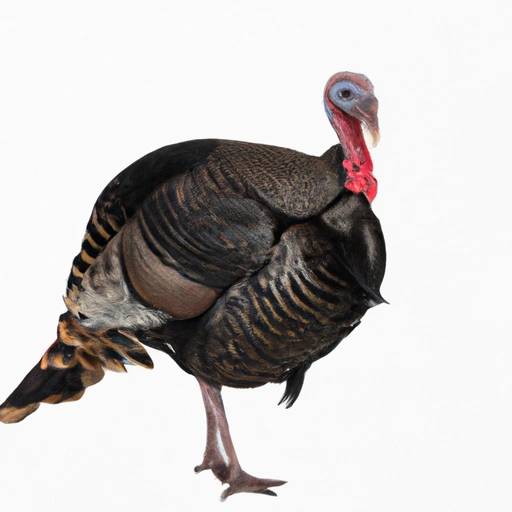Wild Turkey
Description

Wild turkey is a game bird native to North America and is a larger and more robust cousin to the domestic turkey most are familiar with. It is a sought-after ingredient among culinary enthusiasts who appreciate its dense, rich flavor and the touch of wilderness it brings to various dishes. Wild turkey is not only prized for its taste but also for its leaner meat compared to farmed turkey, making it a healthier option for protein.
Common uses
Wild turkey is commonly used in a variety of dishes. Due to its gamey flavor, it is often the centerpiece of a meal, especially in festive and celebratory occasions. It's also used in soups, stews, and casseroles. The meat can be roasted, smoked, or grilled, and is sometimes used in sandwich fillings or salads.
Nutritional value
Calories
A 3.5-ounce (100-gram) serving of wild turkey provides approximately 150 calories.
Protein
The same serving size offers about 26 grams of high-quality protein.
Fat
Wild turkey meat is lean, with around 2 grams of fat per 100 grams, of which less than 1 gram is saturated fat.
Carbohydrates
Wild turkey contains negligible amounts of carbohydrates, making it suitable for low-carb diets.
Vitamins
It is a good source of B-vitamins, particularly niacin, vitamin B6, and riboflavin.
Minerals
Wild turkey is rich in minerals such as zinc, selenium, phosphorus, and iron.
Health benefits
Consuming wild turkey can offer several health benefits. It is an excellent source of lean protein that is essential for muscle growth and repair. The presence of B-vitamins supports energy metabolism and brain health. Minerals like selenium and zinc play a role in immune function, while iron is crucial for blood production.
Potential risks
As with any game meat, there is a potential risk of exposure to contaminants or pathogens if not properly handled or cooked. It is important to source wild turkey from reputable suppliers and ensure it is cooked to an internal temperature of 165°F (74°C) to prevent foodborne illnesses.
Common recipes
Wild turkey is often featured in traditional recipes such as Thanksgiving turkey, turkey pot pie, and turkey soup. It can also be used in gourmet recipes like wild turkey roulade, confit, or turkey terrine.
Cooking methods
Popular cooking methods include roasting, smoking, grilling, and slow-cooking. The meat should be cooked carefully to retain moisture, as it can become dry due to its low fat content.
Pairing with other ingredients
Wild turkey pairs well with a variety of flavors, including earthy herbs like sage, rosemary, and thyme. It also complements sweet and tart fruits like cranberries and apples, as well as root vegetables and rich sauces made from red wine or mushrooms.
Summary
Wild turkey is a flavorful and nutritious game meat with deep roots in American culinary traditions. Its rich taste and lean profile make it a versatile ingredient in both classic and modern recipes. When prepared with care, wild turkey can be a delightful addition to a wholesome and satisfying meal.